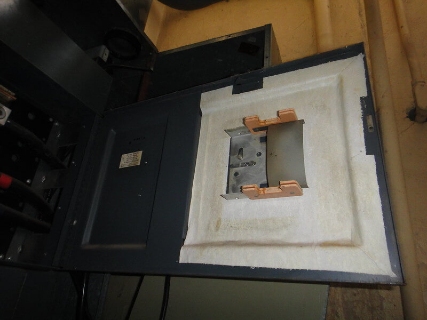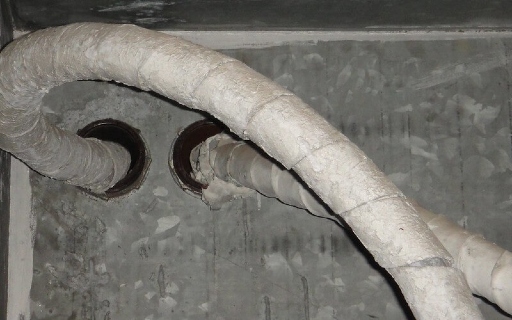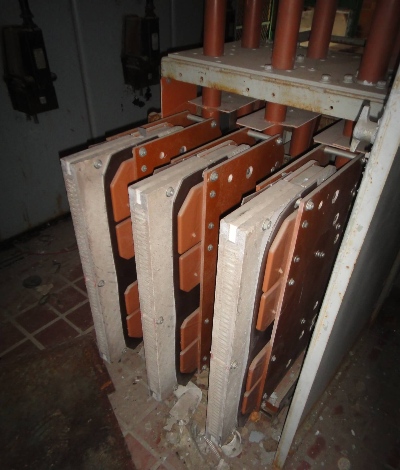Electricians and Asbestos Exposure
Electricians are exposed to asbestos when repairing existing wiring in structures constructed when asbestos building materials were widely used. Repetitive and extended exposure can lead to asbestos-related diseases such as mesothelioma and lung cancer.

Written by Michelle Whitmer • Edited By Walter Pacheco • Scientifically Reviewed By Arti Shukla, Ph.D.
Asbestos.com is the nation’s most trusted mesothelioma resource
The Mesothelioma Center at Asbestos.com has provided patients and their loved ones the most updated and reliable information on mesothelioma and asbestos exposure since 2006.
Our team of Patient Advocates includes a medical doctor, a registered nurse, health services administrators, veterans, VA-accredited Claims Agents, an oncology patient navigator and hospice care expert. Their combined expertise means we help any mesothelioma patient or loved one through every step of their cancer journey.
More than 30 contributors, including mesothelioma doctors, survivors, health care professionals and other experts, have peer-reviewed our website and written unique research-driven articles to ensure you get the highest-quality medical and health information.
About The Mesothelioma Center at Asbestos.com
- Assisting mesothelioma patients and their loved ones since 2006.
- Helps more than 50% of mesothelioma patients diagnosed annually in the U.S.
- A+ rating from the Better Business Bureau.
- 5-star reviewed mesothelioma and support organization.
Testimonials
My family has only the highest compliment for the assistance and support that we received from The Mesothelioma Center. This is a staff of compassionate and knowledgeable individuals who respect what your family is experiencing and who go the extra mile to make an unfortunate diagnosis less stressful. Information and assistance were provided by The Mesothelioma Center at no cost to our family.LashawnMesothelioma patient’s daughter
How to Cite Asbestos.com’s Article
APA
Whitmer, M. (2024, March 25). Electricians and Asbestos Exposure. Asbestos.com. Retrieved April 20, 2024, from https://www.asbestos.com/occupations/electricians/
MLA
Whitmer, Michelle. "Electricians and Asbestos Exposure." Asbestos.com, 25 Mar 2024, https://www.asbestos.com/occupations/electricians/.
Chicago
Whitmer, Michelle. "Electricians and Asbestos Exposure." Asbestos.com. Last modified March 25, 2024. https://www.asbestos.com/occupations/electricians/.
How Are Electricians Exposed to Asbestos?
Licensed electricians and electrical engineers have a long history of dangerous work and exposure to hazards. When working as repairers, technicians, construction laborers or in similar occupations, electricians have many ways they could be exposed to asbestos.
Wiring HVAC units, power systems or consulting with elevator installers in older buildings remains a primary means of asbestos exposure for electricians today. U.S. veterans who served as electricians in the Navy or other military branches had a high risk of contact with chrysotile asbestos wire insulation used in older vessels’ power systems.
According to a 2018 International Journal of Epidemiology study, former electricians are among the groups at highest risk of asbestos-related diseases. Data gathered by British researchers show electricians are almost 16 times more likely to develop mesothelioma than the general population.
Asbestos Products Associated with Electricians

Electricians perform maintenance and repairs on older equipment that may contain asbestos. Often, chrysotile asbestos is an insulator for the wiring in these structures. Without first removing asbestos, any electrical work poses a significant health risk.
Electrician asbestos exposure can involve removing felted asbestos insulation around old wiring or inside breaker boxes. A 2021 study reported that older arc chutes contained roughly 36% chrysotile asbestos within the plastic molding used in circuit breakers before the mid-1980s.
Asbestos electrical wire exposure can happen in one of two ways. Like construction workers, electricians may release asbestos fibers as dust into the air when cutting, drilling or removing existing asbestos-containing construction materials. Repairing electrical products that contain asbestos wire creates another opportunity for risk.
Electrical products and machinery that may contain asbestos include:

- Cable Wraps
Molded asbestos plastic or asbestos paper was an affordable way to cover thick electrical cables. As the material degrades and becomes airborne, the wraps become a significant health risk.
- Turbines
Boilers, pipes and turbines are frequent sources of asbestos in power plants. Turbines produce a large amount of heat and asbestos helped mitigate the risk of fire.
- Generators
Like turbines, manufacturers produced generators with asbestos-containing materials to reduce the chance of overheating and mechanical damage.

- Electrical Shielding
Sheets of asbestos cement provide shielding between electrical components such as switches within arc chutes.
- Electrical Paper
Also known as flash guards, asbestos insulation paper is present in older electrical boxes to prevent fires. However, paper asbestos can quickly become airborne and inhalable.
- Heating Units
Over time, high heat can degrade asbestos electrical wire, causing the toxic fibers to become friable and more easily released into the air.
- Hot Water Tanks
Older water heaters contain asbestos in the insulating blanket underneath the metal cover.
- Plastic Panels
Moldable plastics that contained asbestos also served as a popular choice for electrical panels due to their resistance to heat, moisture and electricity.
Manufacturers That Made Products Electricians Use
The list of manufacturers using asbestos in products includes many popular name brands. These companies have defended their use of asbestos in court after causing mesothelioma in electricians and electrical engineers.
- General Electric: As a manufacturer of asbestos and glass-insulated wiring and cables, GE has battled over 400,000 asbestos claims through court cases and settlements.
- Union Carbide: Between 1963 and 1985, Union Carbide operated an asbestos mine in California. The company is known for manufacturing asbestos electrical components such as arc chutes and phase barriers.
- Lincoln Electric: During World War II, Lincoln Electric was the largest producer of arc welding equipment globally. The company used asbestos in its products and was also responsible for several U.S. Navy ship repairs.
- Westinghouse Electric: Westinghouse Electric manufactured several asbestos electrical components, including cables, wire, welding rods, paper and panels.
- Burnham Holdings: Established in 1905, Burnham manufactured HVAC products, electrical accessories and other materials with asbestos until the 1980s.

Electricians and Mesothelioma
Mesothelioma is a risk for electricians who have spent several years working with chrysotile wire insulation and asbestos electrical components. According to a 2022 report by the European Commission, over 70,000 workers died in 2019 from past exposure to asbestos.
A 2018 toxicology study reported that asbestos wire contained between 75% and 85% chrysotile asbestos. The researchers noted that fibers would become airborne after heating the wire.
In a 2018 case report of an Italian electrician who died at age 66 of pleural mesothelioma, the authors estimated that mesothelioma was responsible for approximately 9,000 deaths in Western Europe in 2018. For many electricians, finding a mesothelioma specialist at the first sign of symptoms could improve prognosis and extend survival.
An earlier 2008 Italian study analyzed data from clinical examinations and interviews of 119 workers occupationally exposed to asbestos. Researchers were looking for mesothelioma biomarkers that could predict the risk of disease, and the study included a group of electricians.
Doctors and scientists measure proteins in the blood called biomarkers to determine if a disease is present. The higher the level of the biomarker, the more severe the condition. The researchers found that a high rate of exposure to asbestos fibers increased the presence of a known biomarker for mesothelioma among electricians.
Legal Options for Electricians Exposed to Asbestos
Peter Allen served as an electrician’s mate aboard two different Navy vessels and worked in close proximity to crumbling asbestos insulation. He died of malignant pleural mesothelioma in October 2017. His wife, Lorraine, then filed a wrongful death claim with an experienced mesothelioma attorney against Armstrong Pumps Company. The case will proceed with a jury trial in 2021.
On March 23, 2019, electrician George C. Proctor died of malignant mesothelioma just one year after his diagnosis. Before his death, Proctor filed an asbestos lawsuit against the companies responsible for his occupational exposure, including Burnham LLC. In 2020, the New York County Supreme Court agreed the evidence was sufficient to proceed to trial.
Eusebio Jacob was a journeyman electrician at the U.S. Naval Ship Repair Facility in Guam from 1962 to 1985. In 2019, he and his wife, Marta, sued Plastics Engineering Company and Rockwell Automation Inc. for their roles in supplying asbestos products to the U.S. Navy. Doctors diagnosed Jacob in 2018 with malignant mesothelioma and other asbestos-related illnesses.
In 2010, Julie Gundlach filed an asbestos injury lawsuit after developing mesothelioma. She alleged that when her electrician father came home from work, he left his asbestos-covered clothes in the laundry room where Gundlach and her sister played, resulting in a secondary exposure known as “take-home exposure.”







